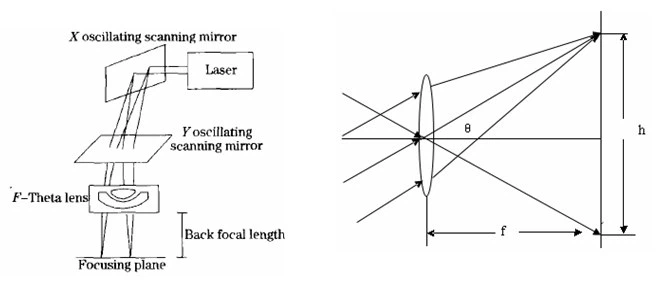Overview and Applications of Laser Marking Technology It has basically replaced traditional marking methods such as pneumatic marking. Laser marking is widely used in numerous fields including the microelectronics industry, automobile ma...
Contact Us
Overview and Applications of Laser Marking Technology
It has basically replaced traditional marking methods such as pneumatic marking. Laser marking is widely used in numerous fields including the microelectronics industry, automobile manufacturing, aerospace, textiles, and artwork. It utilizes a high-energy-density laser beam to act on the target, causing physical or chemical changes in the material, thereby creating arbitrary patterns and text with excellent consistency on the workpiece surface-this is what is known as laser marking.


Importance of f-theta Lenses and Limitations of Existing Products
The f-theta lens is a core component of laser marking machines, and its performance directly affects the quality of the marking process. Currently, there are many companies at home and abroad engaged in the R&D of f-theta lenses. For example, Germany's Rodenstock GmbH, Linos GmbH, Singapore's Singapore Wavelength Pte. Ltd., and the Optical Processing Department of the Institute of Optics and Electronics, Chinese Academy of Sciences (CASIOE) have all developed their own product series. However, when the working area of their f-theta lenses reaches 300mm×300mm, their structures tend to be relatively complex or the lenses themselves become quite thick. Since CO₂ lasers emit infrared light with a wavelength of 10.6μm, and infrared materials are relatively expensive, it is necessary to redesign an f-theta lens with a simple structure and a large working area.
Working Principle of Laser Marking Machines
The working principle of a laser marking machine is as follows: the incident laser first passes through a scanning system, and the outgoing beam from the scanning system is focused on the focal plane through an optical system, thereby realizing laser marking.

Design Scheme and Performance of the Two-Lens f-theta Lens
A two-lens f-theta lens has been designed. Under the conditions of maximizing structural simplicity and lens thinness, the scanning area has been increased. The average light spots of the system at zero field of view, 0.7 field of view, and full field of view all fall within the corresponding Airy disks. The MTF (Modulation Transfer Function) curve of the system is close to the diffraction limit, which meets the requirements of CO₂ laser marking machines for f-theta lenses. The design results show that while simplifying the structure and reducing costs, this f-theta lens system achieves a large working area, along with excellent flat-field performance characterized by good focusing ability and small distortion.